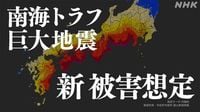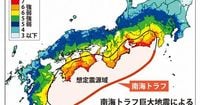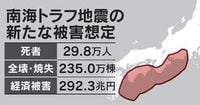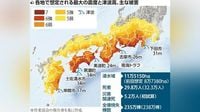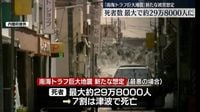On March 31, 2025, a panel of experts announced a new damage estimate for the Nankai Trough megathrust earthquake, predicting 298,000 direct deaths and 2.35 million collapsed or burned-down buildings in the worst-case scenario. This estimate, released by the Cabinet Office's expert review committee, marks a significant update from the previous assessment made in 2012, which projected 323,000 deaths and 2.39 million buildings affected.
The government had set ambitious targets to reduce deaths by 80% and the number of collapsed or burned structures by 50% by the end of fiscal year 2023. However, the latest figures reveal a sobering reality, as the reductions achieved in both categories fell short of 10%. This stark contrast highlights the challenges faced in disaster preparedness and response.
Economic damage from the anticipated earthquake is estimated to reach an astounding 292 trillion yen, reflecting an increase of 72 trillion yen from the previous estimate in 2013. This figure is approximately 2.5 times the national budget, underscoring the potential catastrophic impact on the economy. The expert panel emphasized the need for individual citizens to take proactive measures, such as making their homes earthquake-resistant and adopting prompt evacuation behaviors.
The revised damage estimate incorporates higher-precision data on topography and geology, revealing that the affected area is more extensive than previously thought. The area expected to be submerged by water at a depth of 30 cm or more has increased by 30% to 1152 square kilometers, spanning from Fukushima Prefecture to Okinawa Prefecture. The seismic intensity distribution has also been updated, with 149 municipalities along the coast from Shizuoka Prefecture to Miyazaki Prefecture expected to experience a seismic intensity of 7.
This latest assessment assumes a magnitude (M) 9 earthquake along the Nankai Trough, with the highest number of fatalities anticipated in a scenario where a fault from Suruga Bay to off the Kii Peninsula moves significantly during a strong winter wind at night. In this catastrophic scenario, 215,000 people could die from the tsunami, 73,000 from building collapses, and 8,700 from fires. The potential death toll of 298,000 exceeds the direct deaths from the Great East Japan Earthquake (15,900 people) by a staggering factor of 18.
For the first time, the estimate also includes projections for disaster-related deaths, which may occur due to fatigue and illness caused by the disaster. Based on data from past events like the Great East Japan Earthquake and the Noto Peninsula earthquake, the maximum number of disaster-related deaths has been estimated at 52,000.
The Cabinet Office explained that the slight decrease in the number of deaths and collapsed or burned buildings compared to previous estimates is attributed to differences in seismic intensity distribution and topographical data. While hard countermeasures, such as earthquake-resistant buildings and tsunami evacuation towers, have progressed, the increase in inundation areas has raised the overall damage estimates.
The Nankai Trough earthquake is characterized by its potential to occur along a trench-like seafloor structure extending from Shizuoka Prefecture to Miyazaki Prefecture. Government experts estimate an 80% probability of such an earthquake occurring within the next 30 years. The anticipated strong tremors and massive tsunamis are expected to affect a wide area, including major urban centers such as Nagoya, Kyoto, Osaka, and Kobe.
The Central Disaster Prevention Council first published a damage estimate for the Nankai Trough earthquake in 2003, which projected approximately 25,000 deaths based on historical earthquakes. However, the devastating 2011 Great East Japan Earthquake prompted a reevaluation of the potential impact of the Nankai Trough earthquake. In 2012, the estimate was revised to reflect a worst-case scenario of 323,000 deaths and 2.39 million buildings affected.
In light of the new findings, the government plans to revise its basic disaster prevention plan, which was originally established in 2014 with the goal of reducing deaths and building damage significantly over a ten-year period. The latest report indicates that if the population continues to age and decline, the situation could become increasingly severe, necessitating a comprehensive approach to disaster preparedness.
Experts underscore the importance of community engagement and individual responsibility in disaster preparedness. They call for enhanced public awareness and education regarding earthquake resistance and evacuation strategies. The report stresses that all stakeholders, including government, businesses, and residents, must collaborate to strengthen disaster prevention measures.
As Japan braces for the possibility of the Nankai Trough megathrust earthquake, the urgency of proactive planning and preparedness has never been clearer. With the potential for widespread devastation looming, authorities are urging citizens to take the necessary steps to protect themselves and their communities.
